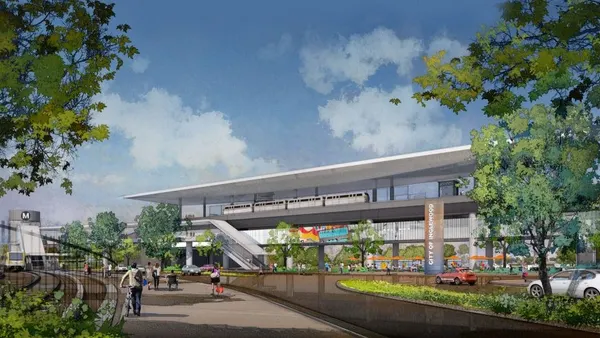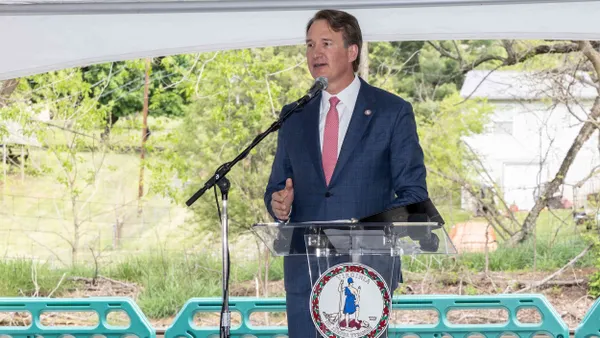Dive Brief:
- The city of Austin, TX has outfitted five intersections with infrastructure to connect vehicles to traffic signals as part of a US Department of Transportation (USDOT) challenge run through the National Operations Center of Excellence. Two more projects are planned in the city for 2019.
- The city has installed dedicated short-range communication (DSRC) devices, which can broadcast basic safety messages to vehicles with the hardware to detect them. Those messages can indicate vehicle position, motion, brake status, vehicle size and intersection geometry data, which will help inform future connected traffic signals.
- The tests come through the government’s SPaT (Signal Phasing and Timing) Challenge, which seeks to deploy DSRC infrastructure in all 50 states by January 2020.
Dive Insight:
The SPaT challenge was a combined effort to get connected infrastructure online even before autonomous vehicles made it necessary, even when there’s little incentive for cities or states to make the investment now. Signaled intersections are “low-hanging fruit” for the transition to vehicle-to-infrastructure (V2I) technology, according to a SPaT presentation from 2017. Already, according to a SPaT website, 26 states have committed to the challenge, with 216 signals operating.
Connected stoplights can make a big difference, especially once they start talking to vehicles and reacting in real-time to traffic conditions. An artificial intelligence (AI) stoplight system in Pittsburgh that senses traffic and creates predictive models to guide lights throughout the city is estimated to have reduced travel times by 25%, braking by 30% and idling by more than 40%.
The pilot also continues Austin’s push to be a national leader in smart mobility. In February, the city approved a Smart Corridor Plan to improve mobility along certain streets. The city has also invested in autonomous shuttles and microtransit, and has explored purchasing a fleet of electric vehicles. In an interview with Smart Cities Dive earlier this year, Jason JonMichael, the city’s assistant director for smart mobility, said he views the city’s mobility development as an “‘all modes, all roads’ type of scenario."
“We need to get out of our own box and quit drinking our own Kool-Aid and look at different ways to attack the mobility problem from an equitable perspective, and not look at it in the traditional methods of origin, destination and use of freeways,” JonMichael said at the time. “But look at how people move around, understand what their existing challenges are and then based off those scenarios innovate to find solutions to those.”











